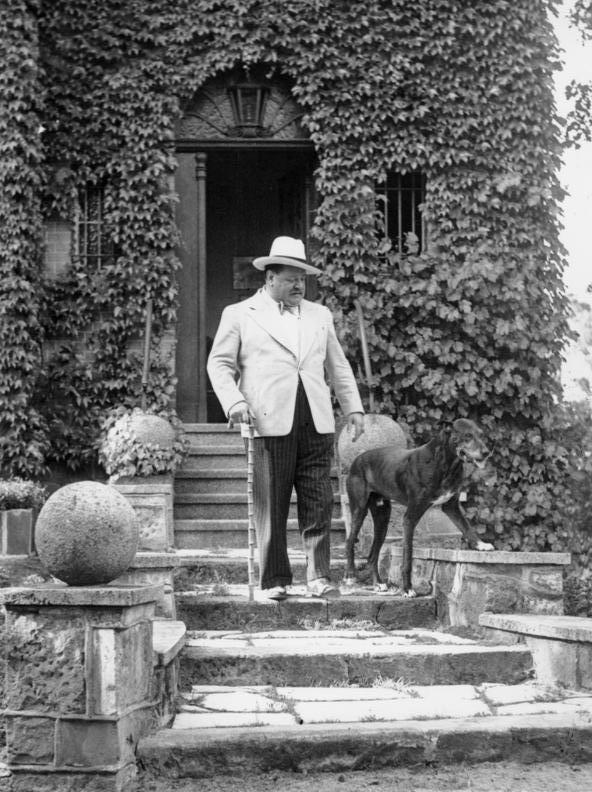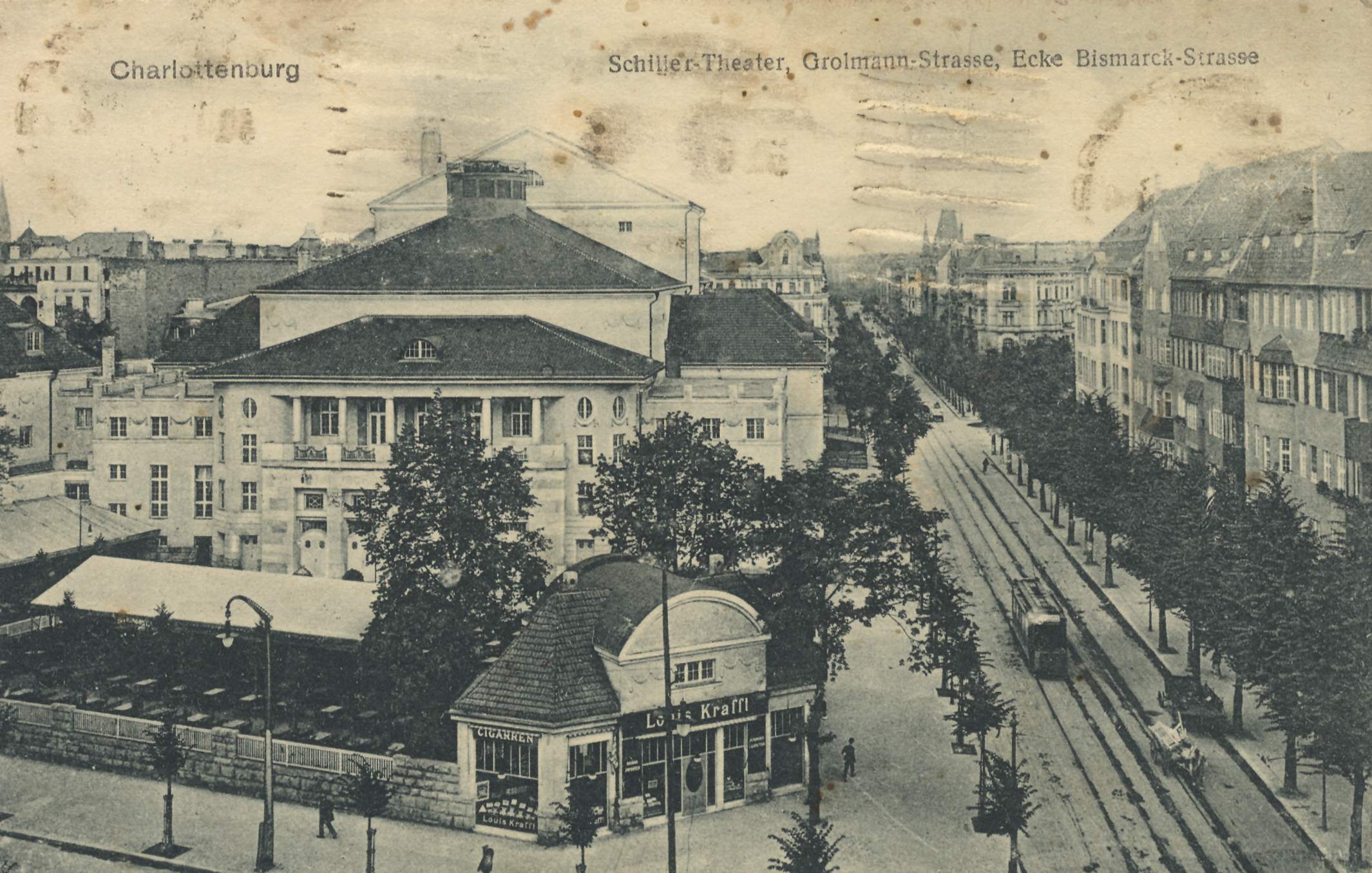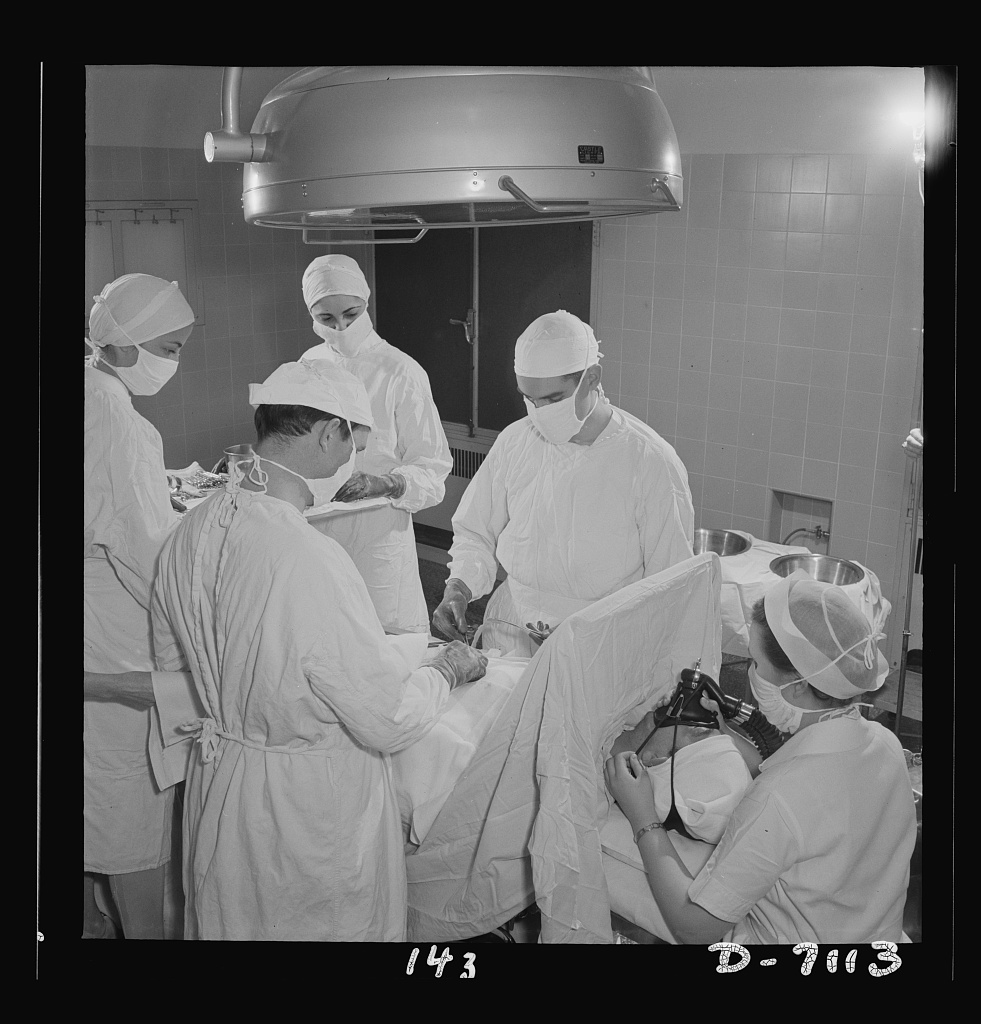|
Heinrich George
Georg August Friedrich Hermann Schulz (9 October 1893 – 25 September 1946), better known as Heinrich George (), was a German stage and film actor. Career Weimar Republic George is noted for having spooked the young Bertolt Brecht in his first directing job, a production of Arnolt Bronnen's ''Parricide'' (1922), when he refused to continue working with the director. He appeared in Fritz Lang's ''Metropolis'' (1927) and '' Dreyfus'' (1930), as well as starring in ''Berlin Alexanderplatz'' (1931). George was an active member of the Communist party during the Weimar Republic. He worked with theatre director Erwin Piscator and playwright Bertolt Brecht, both of whom identified with the political left. On 12 October 1932, he changed his legal name to his stage name ''George''. (NB. This document documents ''Georg August Friedrich Hermann Schulz''s birthday on 1893-10-09, as well as the change of his legal name from ''Schulz'' to ''George'' on 12 October 1932.) Nazi era After ... [...More Info...] [...Related Items...] OR: [Wikipedia] [Google] [Baidu] |
Stettin
Szczecin (, , german: Stettin ; sv, Stettin ; Latin: ''Sedinum'' or ''Stetinum'') is the capital and largest city of the West Pomeranian Voivodeship in northwestern Poland. Located near the Baltic Sea and the German border, it is a major seaport and Poland's seventh-largest city. As of December 2021, the population was 395,513. Szczecin is located on the river Oder, south of the Szczecin Lagoon and the Bay of Pomerania. The city is situated along the southwestern shore of Dąbie Lake, on both sides of the Oder and on several large islands between the western and eastern branches of the river. Szczecin is adjacent to the town of Police and is the urban centre of the Szczecin agglomeration, an extended metropolitan area that includes communities in the German states of Brandenburg and Mecklenburg-Western Pomerania. Szczecin is the administrative and industrial centre of West Pomeranian Voivodeship and is the site of the University of Szczecin, Pomeranian Medical Univ ... [...More Info...] [...Related Items...] OR: [Wikipedia] [Google] [Baidu] |
Schiller Theater
The Schiller Theater is a theatre building in Berlin, Germany. It is located in the central Charlottenburg district at Bismarckstraße 110, near Ernst-Reuter-Platz. Opened in 1907, the building served as a second venue for the Prussian State Theatre company in the 1920s and 1930s. After post-war rebuilding, it was the main stage of the Berlin State Theatres from 1951, until in 1993, the City Senate decided to close it for financial reasons. Since then, it has been rented out for theatre performances and other events, and was used by the Berlin State Opera as an interim venue during extensive renovation work from 2010 to 2017. History The Schiller Theater was built from 1905 to 1906 according to plans by the Munich architect Max Littmann on behalf of Schiller-Theater company and the then-independent city of Charlottenburg. Littmann, founder of the Heilmann & Littmann contracting business, had considerable experience in theatre architecture, having designed and built the Munic ... [...More Info...] [...Related Items...] OR: [Wikipedia] [Google] [Baidu] |
Lucrezia Borgia (1922 Film)
''Lucrezia Borgia'' is a 1922 German silent historical film directed by Richard Oswald and starring Conrad Veidt, Liane Haid, Paul Wegener, and Albert Bassermann. It was based on a novel by Harry Sheff, and portrayed the life of the Renaissance Italian aristocrat Lucrezia Borgia (1480–1519). Botho Hoefer and Robert Neppach worked as the film's art directors, designing the period sets needed. It was shot at the Tempelhof Studios in Berlin. Karl Freund was one of the cinematographers. Famed French director Abel Gance remade the film in 1935. Cesare Borgia (Veidt) is a monstrous villain who will do anything for pleasure and power, even seducing his own sister Lucrezia (Haid) and murdering his male siblings. The Borgias were a medieval family known for their corruption under the rule of Pope Alexander VI Pope Alexander VI ( it, Alessandro VI, va, Alexandre VI, es, Alejandro VI; born Rodrigo de Borja; ca-valencia, Roderic Llançol i de Borja ; es, Rodrigo Lanzol y de B ... [...More Info...] [...Related Items...] OR: [Wikipedia] [Google] [Baidu] |
Die Perlen Der Lady Harrison
''The Pearls of Lady Harrison'' (German:''Die Perlen der Lady Harrison'') is a 1922 German silent film directed by Heinz Herald and starring Heinrich George Georg August Friedrich Hermann Schulz (9 October 1893 – 25 September 1946), better known as Heinrich George (), was a German stage and film actor. Career Weimar Republic George is noted for having spooked the young Bertolt Brecht in his first ....Bock & Bergfelder p.154 References Bibliography * Hans-Michael Bock and Tim Bergfelder. ''The Concise Cinegraph: An Encyclopedia of German Cinema''. Berghahn Books. External links * 1922 films Films of the Weimar Republic Films directed by Heinz Herald German silent feature films German black-and-white films {{Germany-silent-film-stub ... [...More Info...] [...Related Items...] OR: [Wikipedia] [Google] [Baidu] |
Edmund Kean
Edmund Kean (4 November 178715 May 1833) was a celebrated British Shakespearean stage actor born in England, who performed, among other places, in London, Belfast, New York, Quebec, and Paris. He was known for his short stature, tumultuous personal life, and controversial divorce. Biography Early life Kean was born in Westminster, London. His father was probably Edmund Kean, an architect's clerk, and his mother was an actress, Anne Carey, daughter of the 18th-century composer and playwright Henry Carey. Kean made his first appearance on the stage, aged four, as Cupid in Jean-Georges Noverre's ballet of ''Cymon''. As a child his vivacity, cleverness and ready affection made him a universal favorite, but his harsh circumstances and lack of discipline, both helped develop self-reliance and fostered wayward tendencies. About 1794 a few benevolent persons paid for him to go to school, where he did well; but finding the restraint intolerable, he shipped as a cabin boy at Po ... [...More Info...] [...Related Items...] OR: [Wikipedia] [Google] [Baidu] |
Kean (1921 Film)
''Kean'' is a 1921 German silent historical film directed by Rudolf Biebrach and starring Heinrich George and Carola Toelle. It is an adaptation of the 1836 play '' Kean'' by Alexandre Dumas. The film's sets were designed by the art director Ludwig Kainer and Hans Sohnle Hans Sohnle (17 September 1895 – 24 March 1976) was a German art director.Chandler p.270 He frequently collaborated with Otto Erdmann on set designs. Selected filmography * '' The Loves of Käthe Keller'' (1919) * '' The Woman in Doctor's Gar .... Cast References Bibliography * External links * 1921 films 1920s historical films German historical films Films of the Weimar Republic Films directed by Rudolf Biebrach Films based on works by Alexandre Dumas German films based on plays German silent feature films German black-and-white films Films set in London Films set in the 19th century Films about actors UFA GmbH films 1920s German films {{Germany-silent-film-stub ... [...More Info...] [...Related Items...] OR: [Wikipedia] [Google] [Baidu] |
John Willett Payne
John Willett Payne (23 April 1752 – 17 November 1803) was an officer of the Royal Navy who also served as a close friend, advisor and courtier to Prince George before and during his first regency. Payne was notorious as a rake and scoundrel, but was also a Member of Parliament and noted for his bravery in several military actions during the American Revolutionary War and the French Revolutionary Wars. Out of favour in his later years, Payne was reconciled with the Prince in 1799, but died whilst still in the service aged 51, from an illness which developed during blockade operations in the Western Approaches. Early career Payne was born in 1752, son of Ralph Payne, Chief Justice of St Kitts and his wife Margaret ''née'' Gallaway. His elder brother Ralph Payne would later become Baron Lavington. Payne was educated at Dr. Bracken's Academy in Greenwich and later attended the Royal Naval Academy at Portsmouth to train as an officer. During this time he became friends with H ... [...More Info...] [...Related Items...] OR: [Wikipedia] [Google] [Baidu] |
Lady Hamilton (1921 Film)
''Lady Hamilton'' is a 1921 German silent historical film directed by Richard Oswald and starring Liane Haid, Conrad Veidt and Werner Krauss. The film depicts the love affair between the British Admiral Lord Nelson and Lady Emma Hamilton. It was based on two novels by Heinrich Vollrath Schumacher. A copy of the film exists in a Russian film archive. The film's sets were designed by the art directors Hans Dreier and Paul Leni. Location shooting took place in Hamburg, London, Naples, Rome and Venice Venice ( ; it, Venezia ; vec, Venesia or ) is a city in northeastern Italy and the capital of the Veneto Regions of Italy, region. It is built on a group of 118 small islands that are separated by canals and linked by over 400 .... Cast References Bibliography * External links * 1921 films 1920s biographical films 1920s historical romance films German biographical films German historical romance films German epic films Films of the Weimar Re ... [...More Info...] [...Related Items...] OR: [Wikipedia] [Google] [Baidu] |
The Story Of Christine Von Herre
''The Story of Christine von Herre'' (german: Der Roman der Christine von Herre) is a 1921 German silent drama film directed by Ludwig Berger and starring Agnes Straub, Werner Krauss, and Paul Hartmann. It was based on a novella by Heinrich Zschokke. It was shot at the Babelsberg Studios of Decla-Bioscop in Berlin and on location at Glatz in Silesia. The film's sets were designed by the art directors Rudolf Bamberger and Franz Seemann. The film premiered on 30 September 1921 at the UT-Kurfürstendamm and the UT-Nollendorfplatz in Berlin Berlin ( , ) is the capital and largest city of Germany by both area and population. Its 3.7 million inhabitants make it the European Union's most populous city, according to population within city limits. One of Germany's sixteen constitu .... It was popular at the box office and with critics. Cast References Bibliography * External links * 1921 films Films of the Weimar Republic German silent feature films Germ ... [...More Info...] [...Related Items...] OR: [Wikipedia] [Google] [Baidu] |
Appendectomy
An appendectomy, also termed appendicectomy, is a surgical operation in which the vermiform appendix (a portion of the intestine) is removed. Appendectomy is normally performed as an urgent or emergency procedure to treat complicated acute appendicitis. Appendectomy may be performed laparoscopically (as minimally invasive surgery) or as an open operation. Over the 2010s, surgical practice has increasingly moved towards routinely offering laparoscopic appendicectomy; for example in the United Kingdom over 95% of adult appendicectomies are planned as laparoscopic procedures. Laparoscopy is often used if the diagnosis is in doubt, or in order to leave a less visible surgical scar. Recovery may be slightly faster after laparoscopic surgery, although the laparoscopic procedure itself is more expensive and resource-intensive than open surgery and generally takes longer. Advanced pelvic sepsis occasionally requires a lower midline laparotomy. Complicated (perforated) appendicitis sho ... [...More Info...] [...Related Items...] OR: [Wikipedia] [Google] [Baidu] |
Sachsenhausen (Oranienburg)
Sachsenhausen () is a district on the Havel in the north of the town Oranienburg, 35 kilometres north of Berlin in Germany. it had a population of 2,735. The district's name means 'Houses of the Saxons'. The area became notorious for the nearby site of the Nazi concentration camp - also called Sachsenhausen - which operated from 1936 to 1945. For five years after World War II World War II or the Second World War, often abbreviated as WWII or WW2, was a world war that lasted from 1939 to 1945. It involved the World War II by country, vast majority of the world's countries—including all of the great power ... the Soviets used the facility as Special Camp No. 7 (later Soviet Special Camp No. 1). Villages in Brandenburg Localities in Oberhavel {{Brandenburg-geo-stub ... [...More Info...] [...Related Items...] OR: [Wikipedia] [Google] [Baidu] |
Soviet Occupation Zone Of Germany
The Soviet Occupation Zone ( or german: Ostzone, label=none, "East Zone"; , ''Sovetskaya okkupatsionnaya zona Germanii'', "Soviet Occupation Zone of Germany") was an area of Germany in Central Europe that was occupied by the Soviet Union as a communist area, established as a result of the Potsdam Agreement on 1 August 1945. On 7 October 1949 the German Democratic Republic (GDR), commonly referred to in English as East Germany, was established in the Soviet Occupation Zone. The SBZ was one of the four Allied occupation zones of Germany created at the end of World War II with the Allied victory. According to the Potsdam Agreement, the Soviet Military Administration in Germany (German initials: SMAD) was assigned responsibility for the middle portion of Germany. Eastern Germany beyond the Oder-Neisse line, equal in territory to the SBZ, was to be annexed by Poland and its population expelled, pending a final peace conference with Germany. By the time forces of the United Sta ... [...More Info...] [...Related Items...] OR: [Wikipedia] [Google] [Baidu] |





